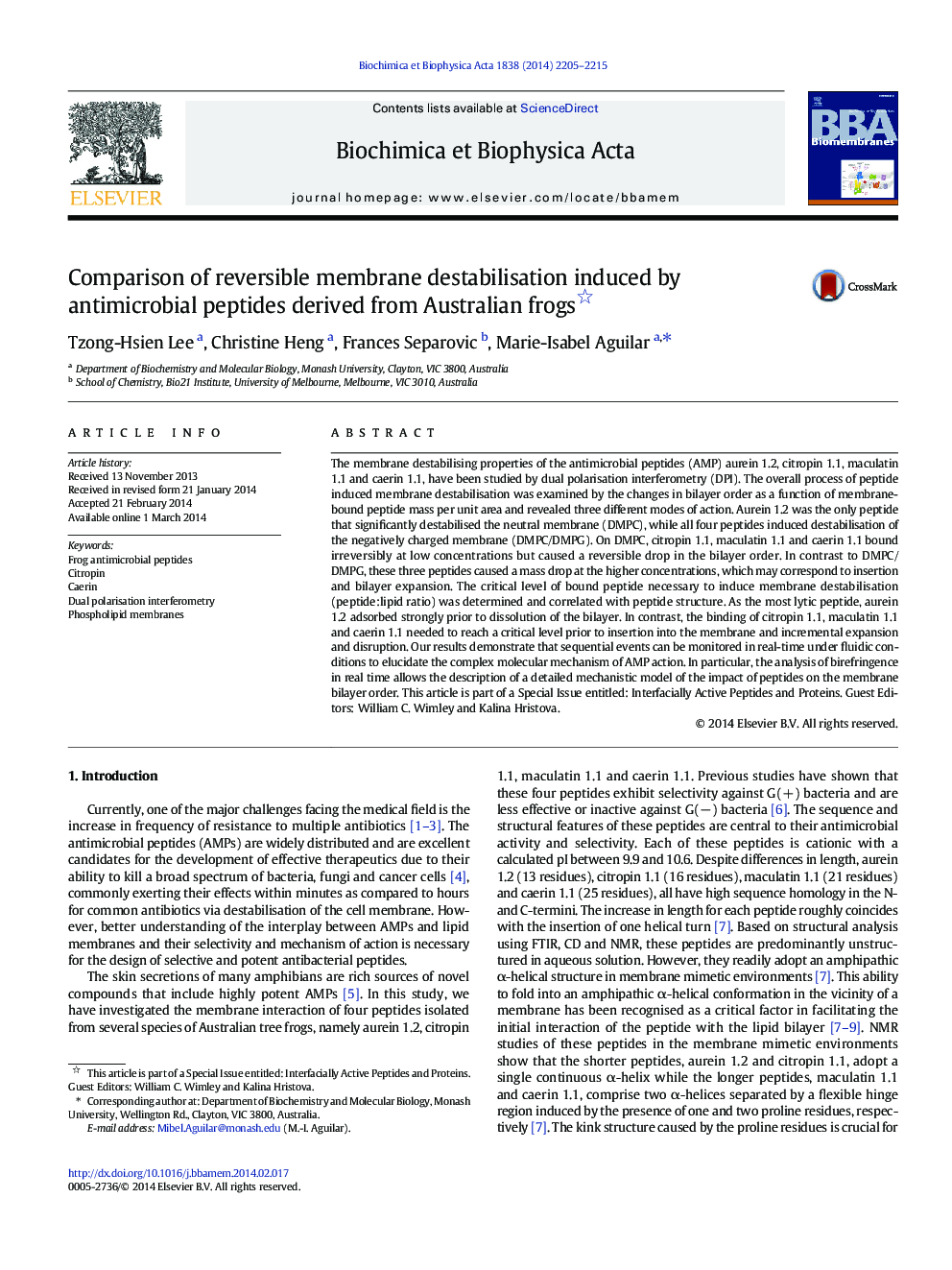| کد مقاله | کد نشریه | سال انتشار | مقاله انگلیسی | نسخه تمام متن |
|---|---|---|---|---|
| 1944178 | 1053188 | 2014 | 11 صفحه PDF | دانلود رایگان |
• Four antimicrobial peptides (AMP) were studied by dual polarisation interferometry.
• Changes in bilayer order revealed three different modes of AMP action.
• Real time analysis of birefringence resulted in a detailed mechanistic model.
• Sequential membrane events can be monitored in real-time under fluidic conditions.
The membrane destabilising properties of the antimicrobial peptides (AMP) aurein 1.2, citropin 1.1, maculatin 1.1 and caerin 1.1, have been studied by dual polarisation interferometry (DPI). The overall process of peptide induced membrane destabilisation was examined by the changes in bilayer order as a function of membrane-bound peptide mass per unit area and revealed three different modes of action. Aurein 1.2 was the only peptide that significantly destabilised the neutral membrane (DMPC), while all four peptides induced destabilisation of the negatively charged membrane (DMPC/DMPG). On DMPC, citropin 1.1, maculatin 1.1 and caerin 1.1 bound irreversibly at low concentrations but caused a reversible drop in the bilayer order. In contrast to DMPC/DMPG, these three peptides caused a mass drop at the higher concentrations, which may correspond to insertion and bilayer expansion. The critical level of bound peptide necessary to induce membrane destabilisation (peptide:lipid ratio) was determined and correlated with peptide structure. As the most lytic peptide, aurein 1.2 adsorbed strongly prior to dissolution of the bilayer. In contrast, the binding of citropin 1.1, maculatin 1.1 and caerin 1.1 needed to reach a critical level prior to insertion into the membrane and incremental expansion and disruption. Our results demonstrate that sequential events can be monitored in real-time under fluidic conditions to elucidate the complex molecular mechanism of AMP action. In particular, the analysis of birefringence in real time allows the description of a detailed mechanistic model of the impact of peptides on the membrane bilayer order. This article is part of a Special Issue entitled: Interfacially Active Peptides and Proteins. Guest Editors: William C. Wimley and Kalina Hristova.
Figure optionsDownload high-quality image (256 K)Download as PowerPoint slide
Journal: Biochimica et Biophysica Acta (BBA) - Biomembranes - Volume 1838, Issue 9, September 2014, Pages 2205–2215
